What’s the largest dolphin in the world? How about the smallest? What whale can hold it’s breath the longest. Read on to find out!
Whales, dolphins and porpoises make up a specific group of marine mammals called Cetaceans, and there are around 90 species. The word cetacean comes from the Latin word cetus, which was used to refer to any large sea creature, and the Greek word ketos, which was a sea monster or whale. (Other marine mammals include the seals, sea lions, and walrus, manatees, dugongs, sea otters and finally, polar bears).
Breath Holding
Which whale or dolphin can hold their breath the longest? The longest ever recorded dive by a whale was made by a Cuvier’s beaked whale. It lasted 222 minutes — almost 4 hours — and broke the record for diving mammals. “These guys blow our expectations,” said Nicola Quick Ph.D, a research scientist at the Duke Lab, specializing in animal behavior and acoustics, in a statement.
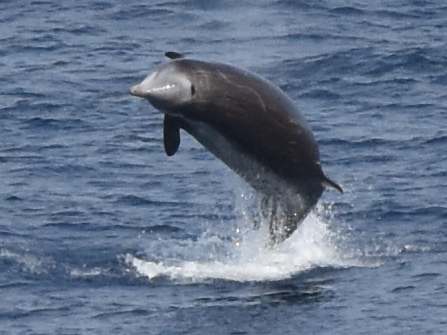
Other whales can also hold their breath for a very long time. A sperm whale can spend around 90 minutes hunting underwater before it has to come back to the surface to breathe. In 1969, a male sperm whale was killed off the coast of South Africa after surfacing from a dive lasting 117 minutes.
On the other hand, a bottlenose dolphin’s (Tursiops truncatus) maximum breath-holding capability is about 12 minutes. The maximum breath hold duration registered for a tagged offshore bottlenose dolphin was 14 minutes in Bermuda in September 2016. Atlantic spotted dolphins have been recorded holding their breath for up to ten minutes. Most of their dives are less than 30 feet and last for 2 to 6 minutes, according to NOAA. This is what we tend to observe in the Bahamas, where they surface every couple of minutes.
Risso’s dolphins, a deep water species, can up their breath up to about 30 minutes.
Size Matters
The largest dolphin is the killer whale (Orcinus orca), which can be up to 23 feet long and weigh up to 4.5 tons. And yes, the orca is actually a dolphin! The smallest dolphin is the Heaviside’s dolphin (Cephalorhynchus heavisidii), which is typically around 3.5 feet long and weighs about 88 pounds.
The largest cetacean of all time is the blue whale (Balaenoptera musculus),which can about 90 – 100 feet. In the North Atlantic and North Pacific, blue whales can grow up to about 90 feet and are over 100,000 pounds, but in the Antarctic, they can reach up to about 110 feet and weigh more than 330,000 pounds.
And so this means, the blue whale also has the largest heart, which can weigh up to 1,000 pounds and the largest tongue in the entire animal kingdom. It weighs 3 tons!
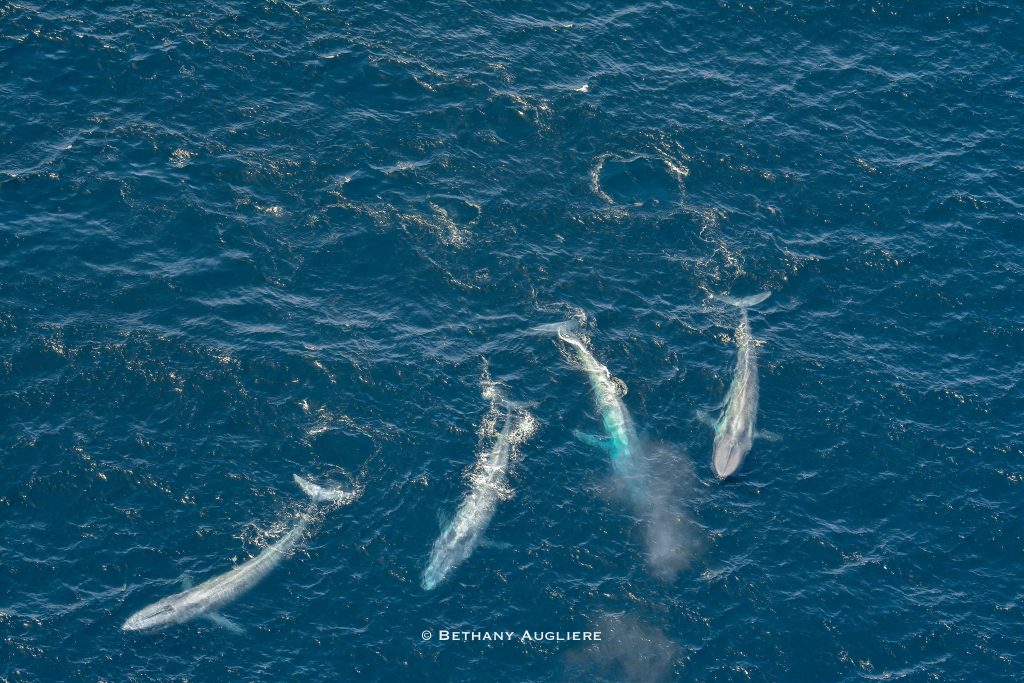
Blue whales feeding off the coast of Monterey Bay, California.
The largest brain on Earth belongs to the sperm whale, weighing about 20 pounds — 6 times heavier than a human brain.
And have you ever wondered about the largest testicles? The male right whale has the largest testicles (and penis) in the world. An average right whale penis measures 7.5-feet long and the testicles together weigh almost a ton, 2,000 pounds.
Longest Migration
What whale or dolphin has the longest migration? The gray whale (Eschrichtius robustus). They actually have the longest migration of any mammal – about 12,000 miles (but up to a documented 13,988 in 172 days) from the icy waters of the Arctic to the warm lagoons of Baja, Mexico, and back again, according to NOAA.
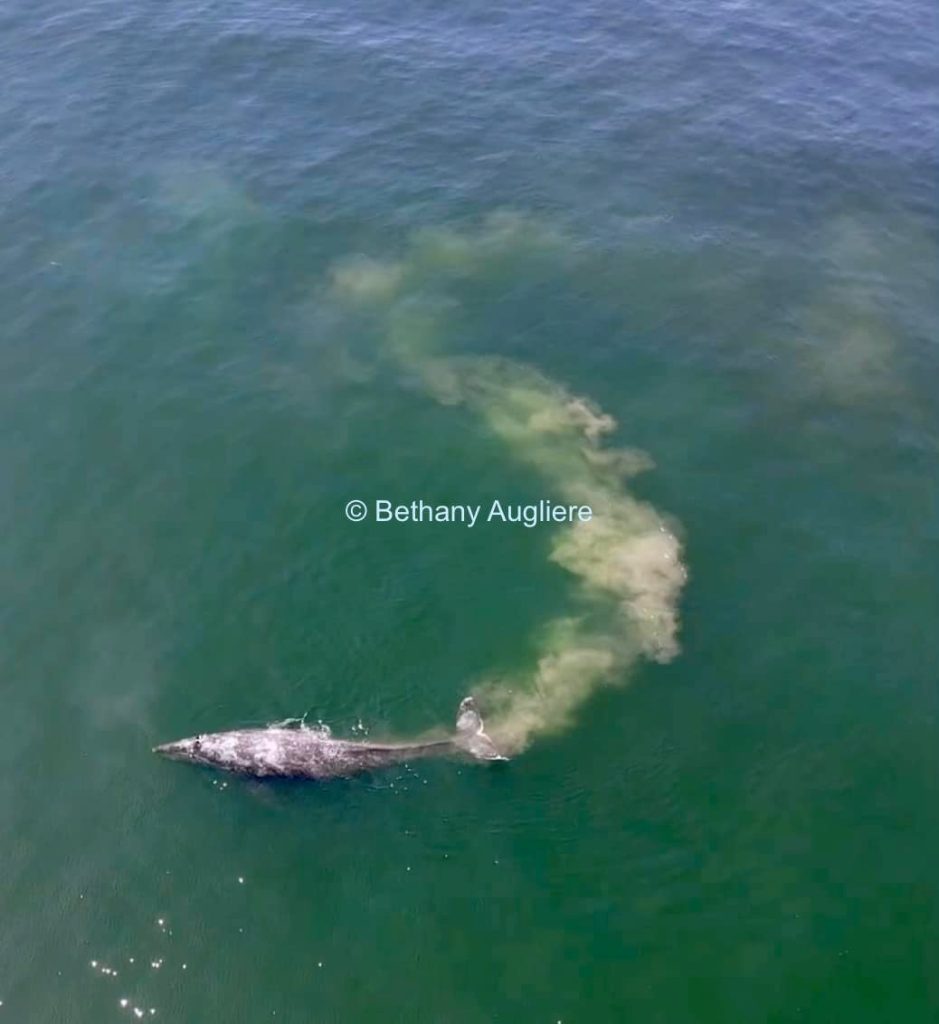
A gray whale on its summer feeding grounds off the coast of Oregon.
But, humpback whales have a quite a journey as well. Researchers from Allied Whale, who curate the North Atlantic Humpback Whale Catalog, matched photos of a humpback whale who migrated from the Russian Arctic to the Dominican Republic, a journey of comparable length to the gray whale, according to Whale and Dolphin Conservation USA.
Deep Divers
Which Cetacean can dive the deepest? This also belongs to the Cuvier’s beaked whale.In 2014, researchers off the coast of California tracked one diving to 2,992-meters or 1.86 miles deep! It lasted 17 minutes. Scientists have recorded sperm whales diving to 2,2550-meters. They do it to find the best hunting spots for their favorite prey – squid and fish.
How do the whales accomplish such a feat? Well, they have special adaptations to survive their deep dives and deal with the increasing pressure from diving beneath the surface, such as a rib cage adapted to collapse under pressure and squeezing all the air the lungs contain into a small space. During dives, the concentration of oxygen containing molecules in the blood and muscles—hemoglobin and myoglobin—are increased to hold more oxygen in the tissues. The whale also experiences a reflexive response to the cold temperatures of the deep waters where the heart rate slows, called bradycardia. This means the whale consumes less oxygen.
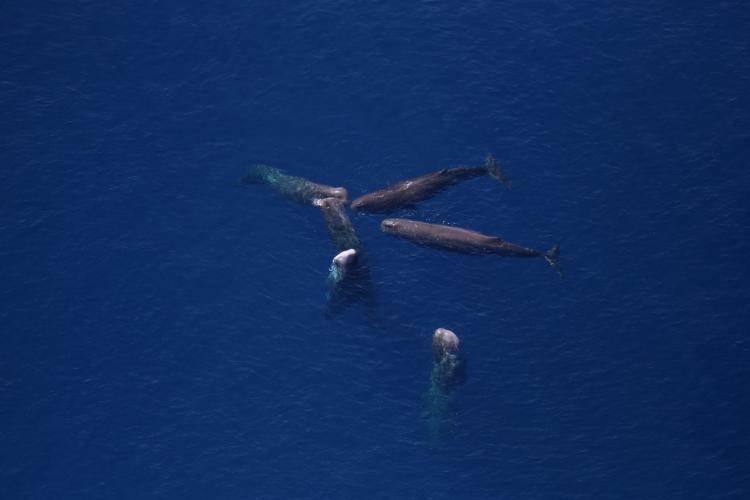
Sperm whales. Credit: NOAA Northeast Fisheries Science Center.
Best Gymnasts
Whales can breach and leap out of the water, but with their small, powerful and flexible bodies, dolphins are definitely known for their aerial acrobats, especially spinner dolphins and dusky dolphins. Dusky dolphins are fast, active swimmers and can perform super high jumps, flips, and twists. But, according to Pacific Mammal Research, the calves are not born with an innate knowledge of how to do these moves. Calves have to learn these more complex maneuvers one by one in a specific sequence (just like human babies have to learn to crawl first, then walk, then run). (Read more).
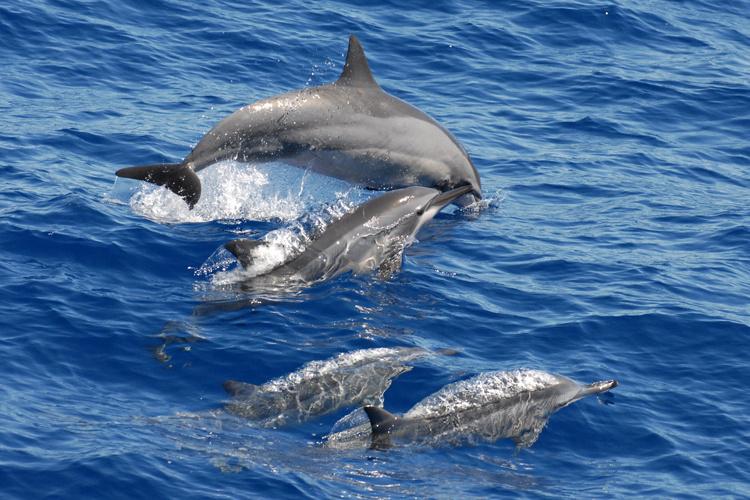
Spinner dolphin. Credit: Adam U (NOAA Fisheries Permit #14097)
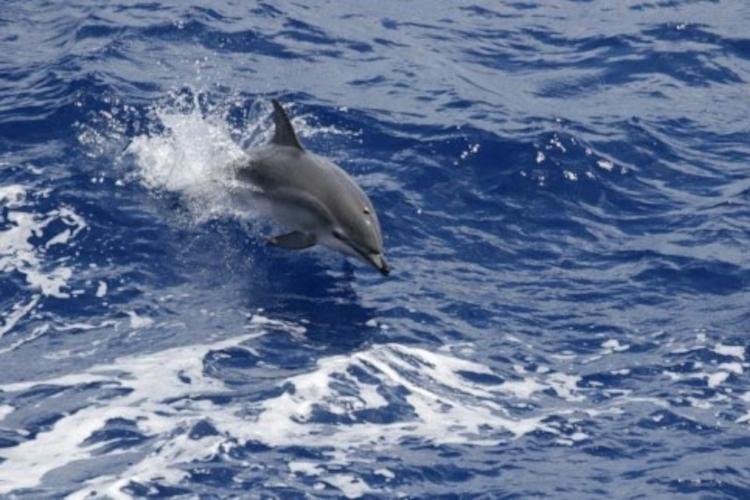
A Clymene dolphin observed during the AMAPPS Summer 2021 research survey. NMFS MMPA Permit No.21938. Credit: NOAA Fisheries/Mary Applegate
Top Predator
What marine mammal is top of the food chain? Orcas sit at the top of the food web, even about great white sharks. Orcas exist in all oceans of the world, and depending on where they live, they speacialize on different prey, whether it’s salmon, herring, ice seals, stingrays, sharks and other marine mammals like dolphins, porpoises, seals, sea lions and sea otters.
There’s a small population of orcas in the Caribbean that eat dolphins, including the ones we study — Atlantic spotted dolphins.
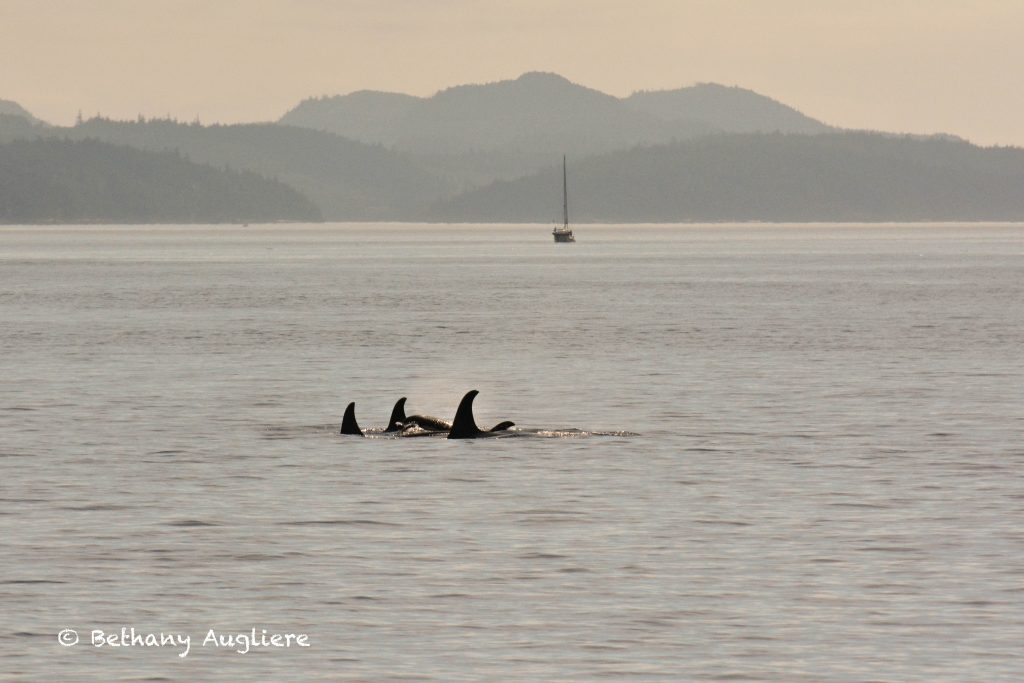
Longest Lived
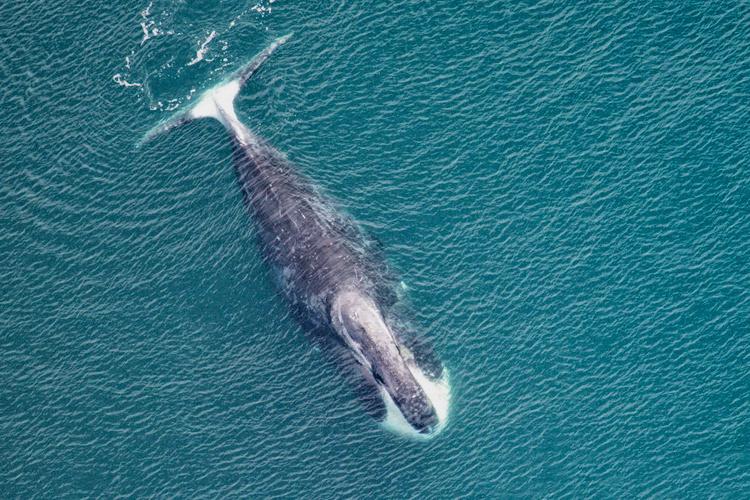
Bowhead whale. Copyright NOAA.
